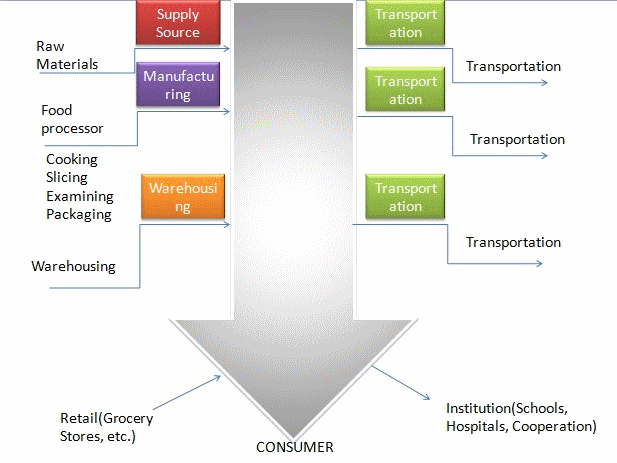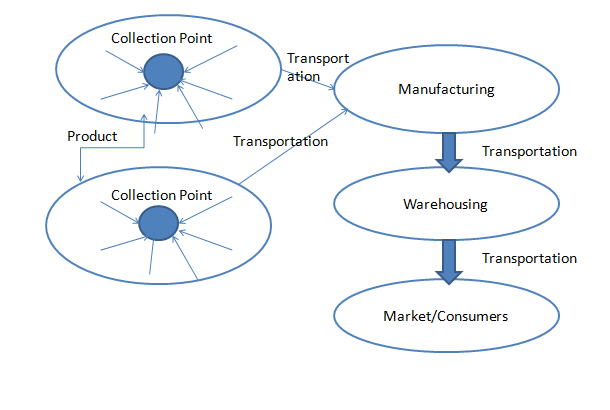|
In agriculture, food distribution in supply chains plays an important role, which provides a method for distributing or transporting food from the suppliers to customers or markets. Moreover, since the traditional way of food distribution is lack of systematic management, to reduce the food loss during distribution, the e-food distribution can help a lot no matter in tracking, maintaining or distributing.
Generally speaking, food distribution in agriculture contains four components:
-
Supply Source: Supply source is the source that raw food can be imported, such as individual farmers or large farms.
-
Manufacturing: Manufacturing is food processing, such as cleaning/slicing/cooking, examining (security) and packaging (the expiration date).
-
Warehousing: Distributed warehouses are built to store food for distribution, and also only secured food can be distributed. When it comes to security management, first-expiry-first-out (FEFO) and first-in-first-out (FIFO) tracking and pick selection are adopted at shipment.
-
Transport: The transportation is through all the processes: transporting raw food to certain and closed manufacturers, transporting packaged food to closed warehousing, and transporting food from closed warehousing to consumers (institutions or retail shops).
|
As shown in Figure 1.1, it is the general conceptual view of food distribution. However, the pattern may vary between developing and developed countries.
In developing countries, the agriculture is smallholder. Thus, it is very sensitive to transport strategies, for the reason that many isolated remote farms have little opportunity or poor transport facilities to reach the market. Considering this factor, a well-planned transport system helps small holders harvest and market crops more efficiently, and also reduces the food loss.
To solve this problem, we can add some collection points for temporary storage, as shown in Figure1.2:
|


